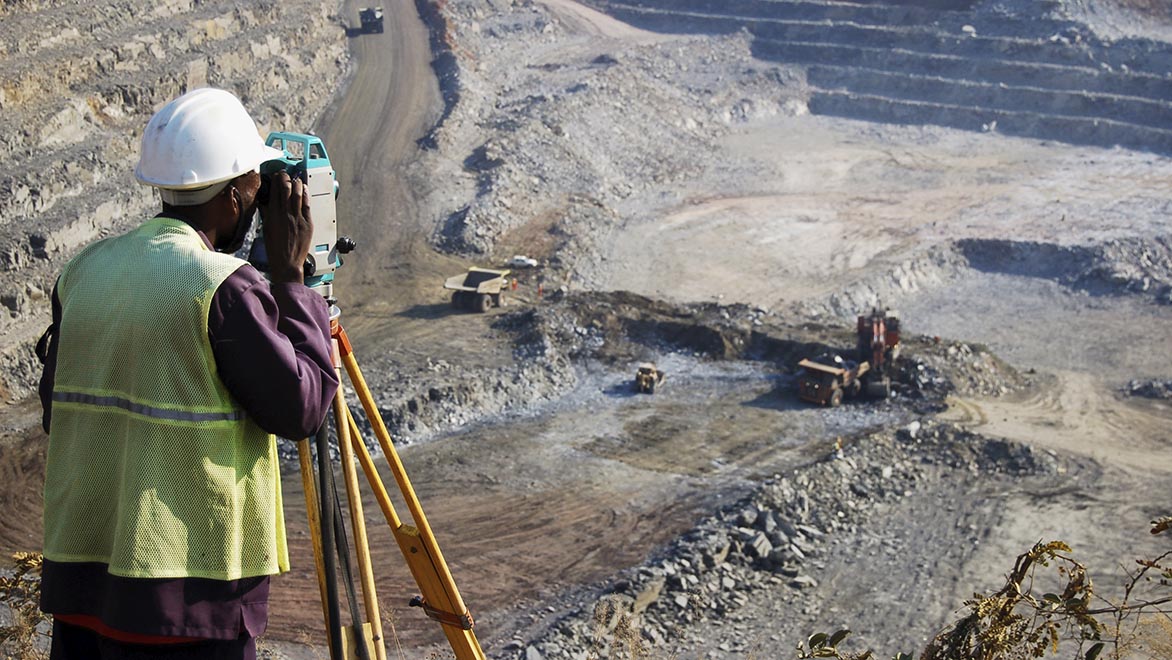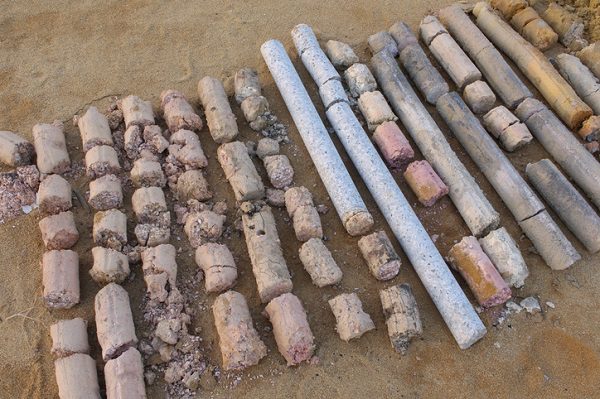Discovering the Function of a Geotechnical Engineer Description and Responsibilities
Discovering the Function of a Geotechnical Engineer Description and Responsibilities
Blog Article
The Importance of Geotechnical Engineering in Resolving Environmental Obstacles and Enhancing Building And Construction Safety And Security
Geotechnical engineering offers as a cornerstone in the junction of ecological stewardship and building and construction security, providing essential insights into the actions of soil and rock under different problems. This self-control not just addresses pushing environmental difficulties such as dirt disintegration and groundwater protection but likewise enhances the toughness of facilities against natural dangers. By implementing critical website investigations and customized mitigation measures, geotechnical engineers play a crucial function in protecting both human lives and ecological stability. Yet, the intricacies of these obstacles increase essential concerns concerning the future direction of this field and its implications for lasting growth.

Function of Geotechnical Design
Geotechnical design plays a vital duty in the layout and construction of framework by attending to the behavior of dirt and rock products under various problems. This field of design is important for comprehending the interaction in between structures and the ground, which consists of determining the load-bearing capability of soil, evaluating security, and forecasting possible settlement or failure.
Geotechnical engineers are in charge of conducting site investigations, which involve tasting and testing dirt and rock to gather information on their chemical and physical residential properties. This info is vital for developing foundations, retaining walls, and other earth-retaining frameworks that guarantee security and long life. Geotechnical engineering educates the selection of appropriate building methods and products, consequently reducing threats linked with dirt actions.
Furthermore, the combination of geotechnical engineering principles into metropolitan preparation and environmental monitoring is important for addressing difficulties such as ground contamination and groundwater administration. By comprehending geotechnical variables, designers can establish lasting services that boost the resilience of framework against all-natural risks, while also promoting ecological stewardship. Eventually, the role of geotechnical design is crucial for accomplishing safe, durable, and eco conscious construction methods.
Soil Erosion Reduction
Soil disintegration presents a significant threat to both ecological stability and infrastructure stability, influencing about 24 billion tons of productive dirt lost yearly worldwide. This phenomenon is exacerbated by variables such as deforestation, urbanization, and bad agricultural methods. Geotechnical design plays an essential role in creating reliable soil disintegration mitigation techniques that secure both the atmosphere and construction tasks.
One strategy involves the execution of disintegration control approaches such as vegetation planting, which stabilizes dirt with root systems. Furthermore, the construction of retaining balconies and walls can efficiently lower surface overflow and secure susceptible locations from erosion. Proper drain layout is additionally essential; it decreases water buildup and directs excess overflow far from important frameworks.
Additionally, geotechnical engineers utilize soil stabilization methods, such as the application of geotextiles and naturally degradable floor coverings, to boost dirt communication and stop degradation - geotechnical engineer description. Normal tracking and evaluation of erosion-prone websites make it possible for prompt interventions, making certain long-term sustainability. By incorporating these techniques, geotechnical design not only minimizes the effects of soil disintegration yet likewise contributes to the durability of framework against environmental challenges, eventually fostering a much safer and much more lasting developed environment
Groundwater Protection Methods
Groundwater works as a crucial resource for drinking water, farming, and industrial processes, making its security vital for environmental sustainability and public wellness. Reliable groundwater security techniques are vital in minimizing contamination threats and ensuring the long life of this source.

Regular tracking of groundwater quality is likewise important, enabling very early discovery of contamination sources and facilitating timely removal initiatives. Employing innovative technologies, such as geophysical surveys and remote noticing, aids in identifying potential threats to groundwater books.
Furthermore, public education and stakeholder interaction are important, cultivating area support for groundwater protection initiatives. geotechnical companies in south africa. By integrating regulatory steps, technical developments, and area involvement, we can develop a thorough framework that safeguards groundwater sources while promoting lasting development and construction methods
Landslide Threat Administration
Landslides posture significant hazards to both human safety and security and infrastructure, making effective threat management strategies vital. Geotechnical engineering plays a critical function in determining, evaluating, and mitigating landslide risks. An extensive understanding of incline security, soil auto mechanics, and hydrology is important for developing efficient danger monitoring plans.
The initial action in landslide risk monitoring entails thorough site examinations, that include geological mapping and dirt screening. These investigations help engineers review the potential for landslides by determining vital variables such as slope angles, dirt make-up, and water material. Making use of advanced modern technologies such as remote noticing and geophysical surveys can boost the accuracy of these analyses.
When dangers are identified, proper reduction actions can be carried out. These might consist of design remedies such as keeping wall surfaces, water drainage systems, and slope stablizing techniques. Furthermore, keeping an eye on systems ought to be developed to identify indicators of ground activity and changes in water levels, permitting for positive treatments.

Enhancing Building And Construction Security
Construction websites commonly offer a myriad of hazards that can jeopardize employee safety and security and project integrity. Geotechnical design plays an essential function in boosting building security by supplying necessary understandings into subsurface problems. Through comprehensive dirt and rock analysis, geotechnical engineers can recognize prospective threats, such as dirt instability, groundwater concerns, and seismic vulnerabilities, which may compromise the safety and security right here of building activities.
Implementing geotechnical solutions, such as proper foundation style and the usage of retaining frameworks, reduces these threats substantially. These services not only make certain the stability of the structures being developed but additionally create a more secure working setting for construction workers.
Additionally, promoting a society of safety via training and adherence to established security methods additionally boosts building site security. By integrating geotechnical experience right into the preparation and implementation stages, building tasks can accomplish greater safety requirements, ultimately securing employees and ensuring successful project completion.
Conclusion
In conclusion, geotechnical design offers as a critical self-control in promoting and dealing with ecological obstacles construction security. With reliable soil click here for more info erosion mitigation, groundwater defense strategies, and landslide threat management, geotechnical designers add to the advancement of resilient framework. The integration of these methods fosters a much safer building setting and improves the sustainability of civil design jobs. Ultimately, the expertise of geotechnical designers is indispensable in safeguarding both all-natural sources and human lives against prospective dangers.
Geotechnical design serves as a keystone in the intersection of environmental stewardship and construction safety and security, offering vital insights right into the actions of dirt and rock under various problems. Geotechnical engineering notifies the option of appropriate construction methods and materials, thereby minimizing risks connected with dirt actions.
Geotechnical engineering plays a pivotal role in establishing reliable dirt disintegration mitigation techniques that secure both the atmosphere and building tasks.
Furthermore, geotechnical engineers employ soil stablizing methods, such as the application of geotextiles and biodegradable floor coverings, to enhance dirt cohesion and protect against deterioration. Through extensive dirt and rock analysis, geotechnical designers can recognize prospective threats, such as dirt instability, groundwater concerns, and seismic susceptabilities, which may jeopardize the security of building and construction activities.
Report this page